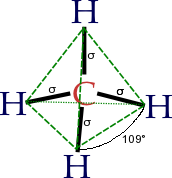
Photo from academic.microsoft.com
Within heterocyclic chemistry, β-lactams comprise an extraordinary class of strained compounds, recognized for their biological importance as potent antibiotics and their chemical value as flexible building blocks for the construction… Click to show full abstract
Within heterocyclic chemistry, β-lactams comprise an extraordinary class of strained compounds, recognized for their biological importance as potent antibiotics and their chemical value as flexible building blocks for the construction of diverse nitrogen-containing structures. Among the synthetic routes available to access this interesting scaffold, the carbonylation of aziridines, in which carbon monoxide is inserted into one of the ring carbon–nitrogen bonds, is praised for its efficiency and remarkable regio- and stereoselectivity. This review provides a comprehensive overview of aziridine-to-azetidin-2-one carbonylation studies. The protocols are categorized according to the different transition metals (i.e. rhodium, palladium, nickel, iron, and cobalt) that have been employed (in a catalytic or stoichiometric amount) to effect this transformation.
Journal Title: European Journal of Organic Chemistry
Year Published: 2017
Link to full text (if available)
Share on Social Media: Sign Up to like & get
recommendations!